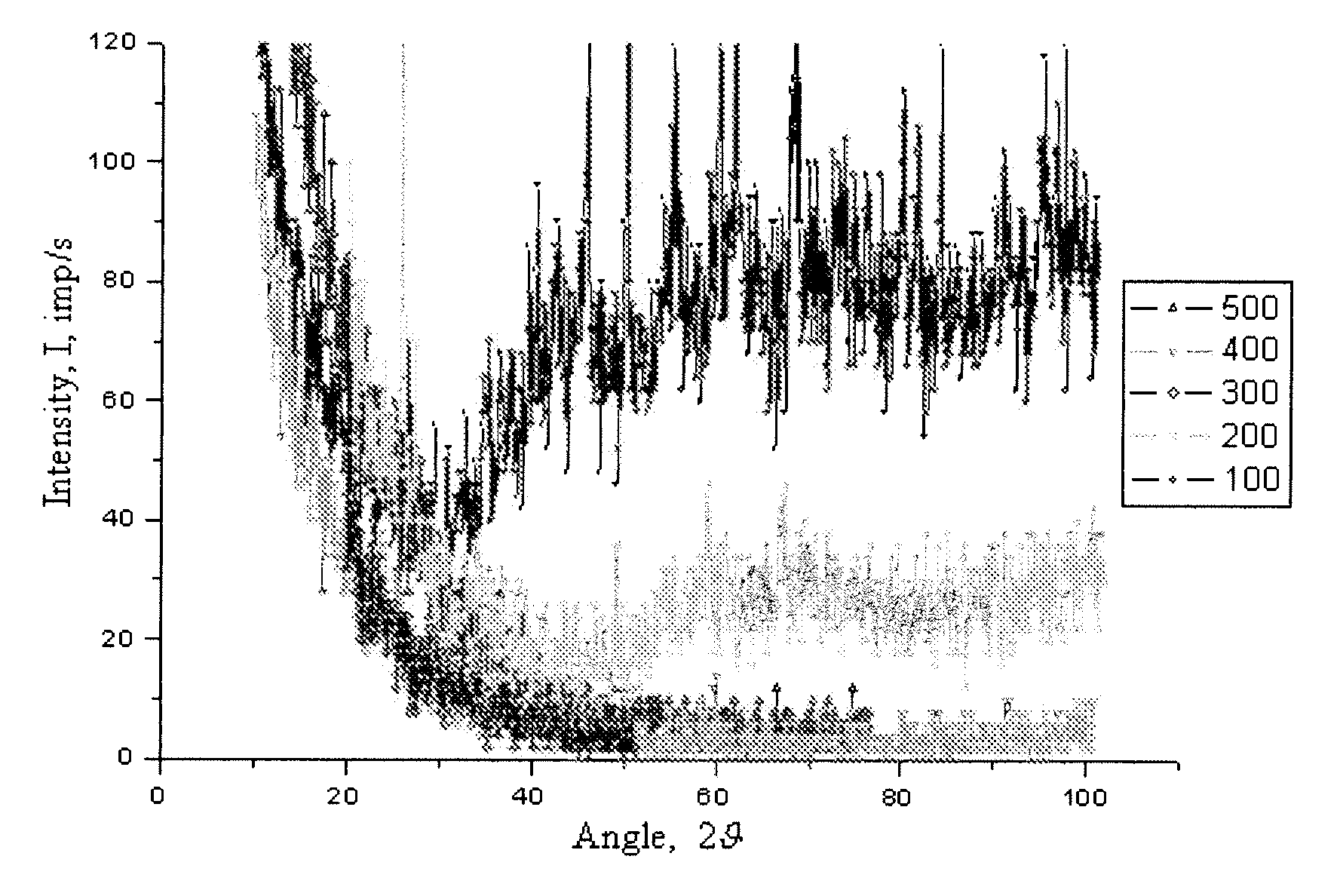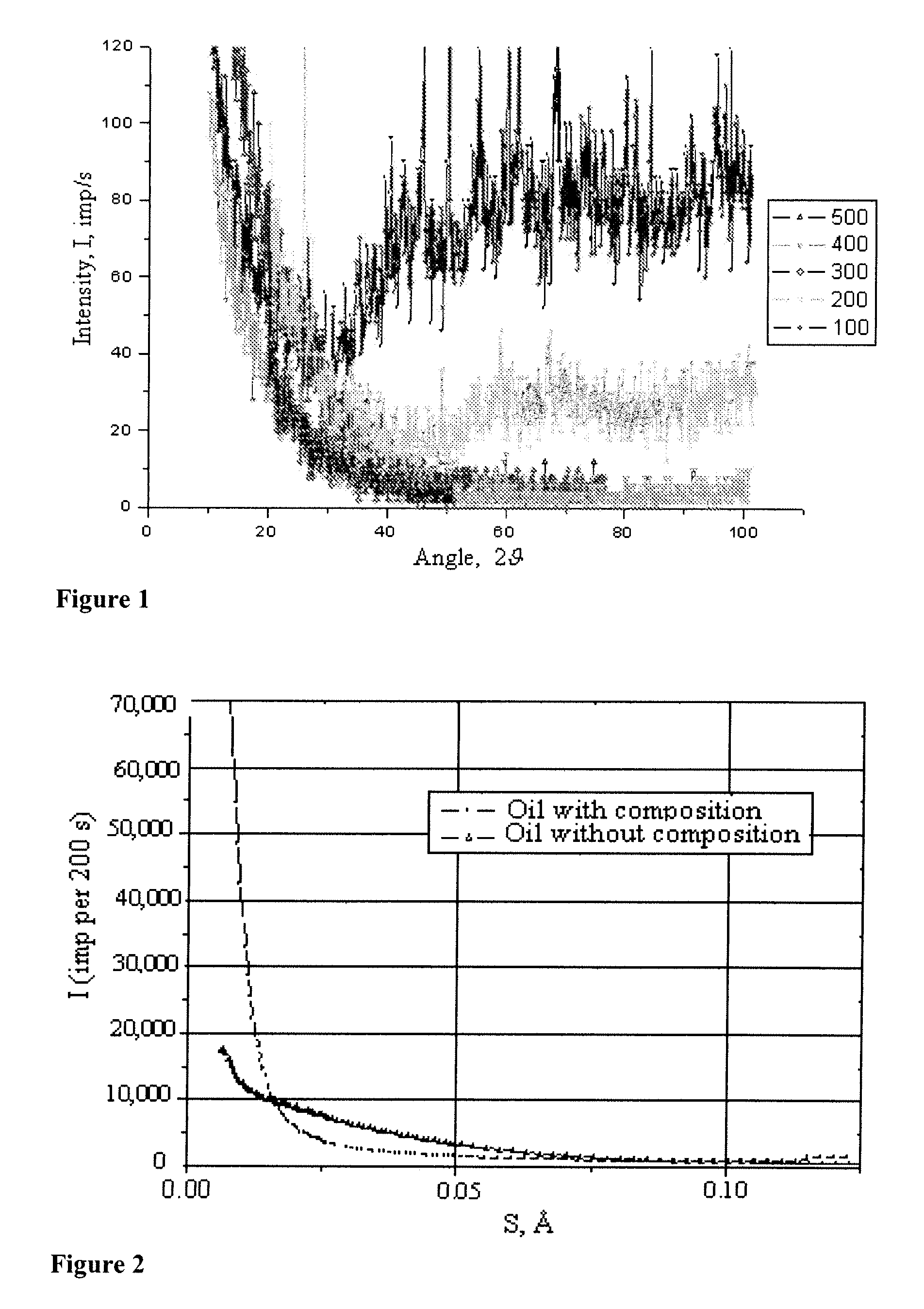Nano-particle metal treatment composition for creating a ceramic-metal layer
a ceramic metal and composition technology, applied in the field of metal treatment compositions, can solve the problems of prior art use of tin (ii) chloride in compositions, and achieve the effects of reducing the coefficient of friction of the system, excellent plating characteristics, and reducing the overall system wear
- Summary
- Abstract
- Description
- Claims
- Application Information
AI Technical Summary
Benefits of technology
Problems solved by technology
Method used
Image
Examples
example 1
[0088]Utilization of the composition showed improvements in surface roughness, Ra, of the friction pair. The working surface of the cast iron discs in the initial state had a surface finishing class of 8. The average height of the Ra was 0.32-0.63 micrometers. Striped scratches and smoothed tops of ledges were observed on the surfaces of the discs during investigation under a binocular microscope at 50×. The average height of Ra measured by the roughness indicator was 0.40±0.02 micrometers. Table 1 displays the results of the roughness testing.
[0089]MO represents a mineral oil, Mannol 15W-40, and SO represents a synthetic oil, Shell Helix Ultra 5W-40. C represents the composition of the invention. MO+C represents the mineral oil with the composition added, and SO+C represents the synthetic oil with the composition added.
[0090]
TABLE 1RoughnessChange inafter 10 hourRoughness,test, Ra,ΔR,LubricationmicrometersmicrometersMO0.30.1MO + C0.250.15SO0.320.08SO + C0.260.14
[0091]The triboeleme...
example 2
[0103]Disks were made of gray cast iron, which has the composition shown in Table 4. To relieve stresses due to mechanical processing, the disks were tempered as follows; heating at 300 C, increasing the heat at a rate of 100 C / hour until 600 C is reached, soaking in water for three hours, cooling to 300 C at a rate of 100 C / hour, and air cooling. This tempering regime is designed to simulate the thermal regime of cylinder sleeves of diesel locomotive engines.
[0104]
TABLE 4Elemental Content, Weight %CMnSiNiCrMoPSCu3.0-0.88-1.82-1.10-0.35-0.51-0.11-0.38-3.020.921.91.130.380.540.120.39
[0105]The blocks were sections of piston rings made of high-strength inoculated Magnesian cast iron with spheroidal graphite having a hardness of HRB 105-108. Working surfaces of the blocks were coated with 210-220 micrometers of Chromium via the electrolytic technique. Microhardness of the Chromium coating was 7-7.5 GPa.
[0106]Tribological test were carried out using the friction machines 2070CMT-1 and CM...
example 3
[0119]Tribological tests were carried out according to a “Ring-Ring” scheme using a friction machine CMII-2 set for rolling friction with slipping. This scheme is typical for the operation of rolling bearings and gears. The diameter of the samples was 50 millimeters. The stepwise addition was similar to that of Example 1. Loading pressure was 0.2 kN and slipping was 25%. The samples were made of IIIX15 steel with a hardness after treatment was 61-62 HRC. The working surfaces were lubricated at the beginning of the test by means of a paint brush. Three greases were used in the testing; Pennzoil Premium Wheel Bearing 707L Red Grease (707), 76 Omniguard QLT Grease 2 (76), and S3550 Grease (S350). The amount of the composition added to the greases was 10 weight %. The results are shown in Table 8.
[0120]
TABLE 8Coefficient of Friction, f, at Load, P, kNP =P =P =Lubrication0.2 kN0.4 kN0.6 kNP = 0.8 kNP = 1.0 kN760.2000.0550.0560.0560.05876 + C0.0500.0550.0530.0550.058S3500.0590.0620.0620.0...
PUM
| Property | Measurement | Unit |
|---|---|---|
| particle size | aaaaa | aaaaa |
| thickness | aaaaa | aaaaa |
| weight % | aaaaa | aaaaa |
Abstract
Description
Claims
Application Information
 Login to View More
Login to View More - R&D
- Intellectual Property
- Life Sciences
- Materials
- Tech Scout
- Unparalleled Data Quality
- Higher Quality Content
- 60% Fewer Hallucinations
Browse by: Latest US Patents, China's latest patents, Technical Efficacy Thesaurus, Application Domain, Technology Topic, Popular Technical Reports.
© 2025 PatSnap. All rights reserved.Legal|Privacy policy|Modern Slavery Act Transparency Statement|Sitemap|About US| Contact US: help@patsnap.com



